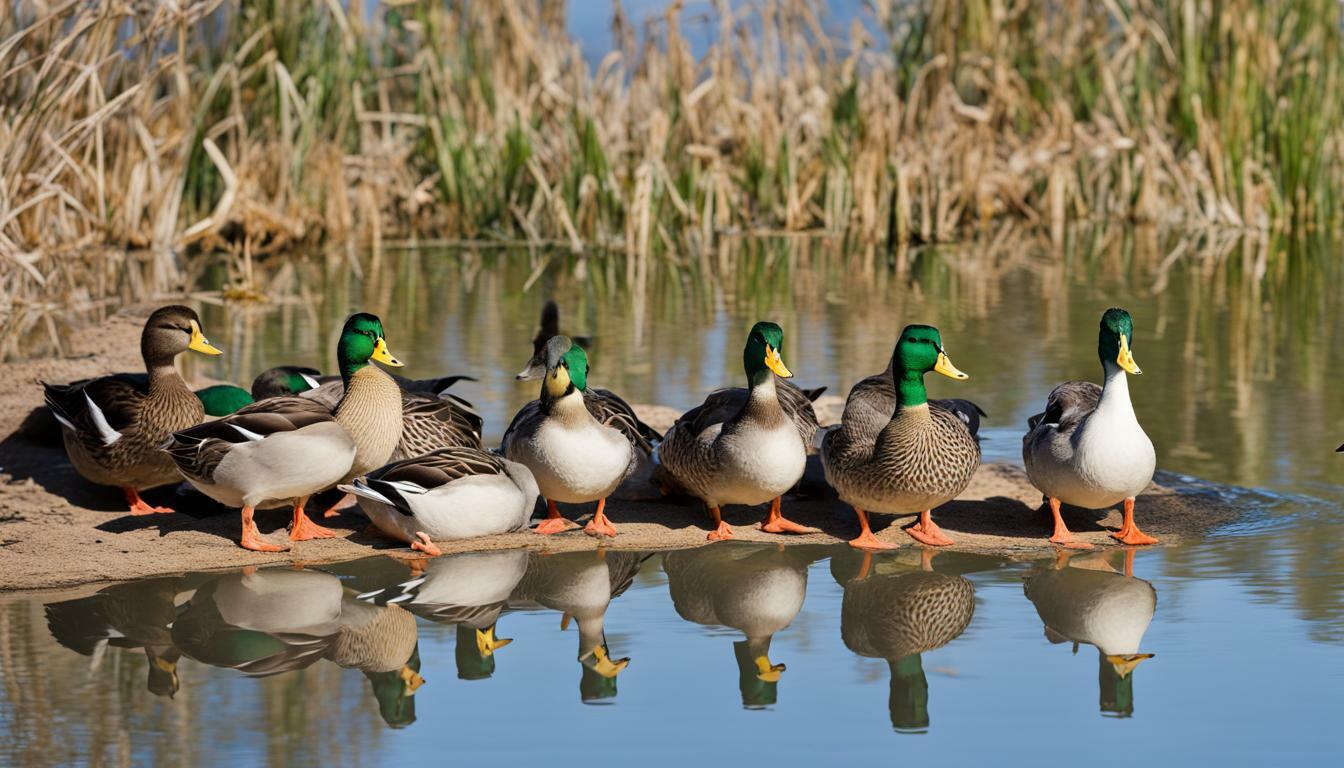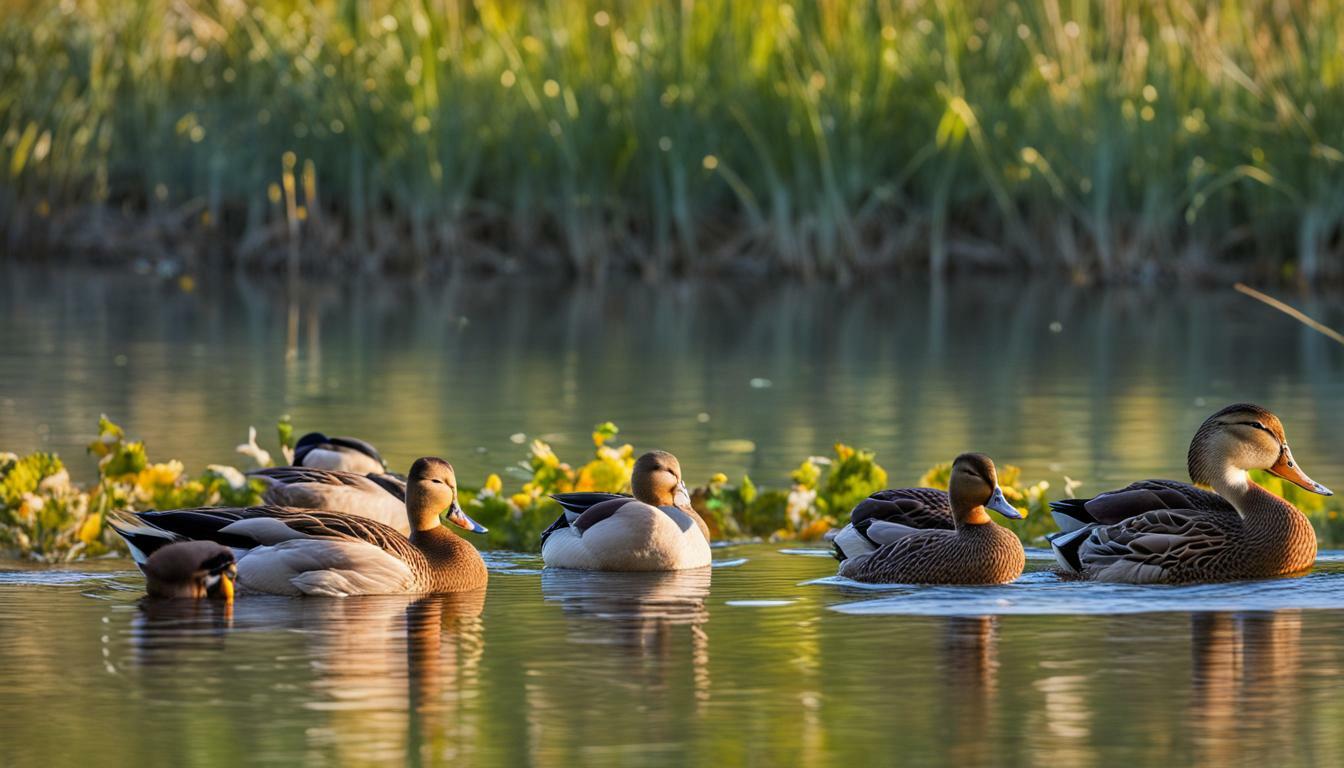Why Do Ducks Bob Their Heads? Explore the Mystery

Table of content:
Ducks bobbing their heads is a common sight. But why do they do it in so many situations? Let’s explore some of the main reasons ducks bob their heads when walking, swimming, eating, and more.
Why Do Ducks Bob Their Heads When They Walk?
As ducks waddle on land, they repeatedly bob their heads up and down with each step. This motion seems to serve multiple purposes for ducks.
First, it helps them maintain balance. Ducks have a wide, swaying gait as they walk. Their body shifts from side to side with each stepping motion. Bobbing the head counteracts these body motions, helping ducks stabilize their vision and stay balanced.
The bobbing may also make it easier for ducks to walk on land. Ducks normally carry their bodies low to the ground. Thrusting the head up with each stride gives them added lift and momentum to propel themselves forward. This allows them to cover ground more efficiently.
In addition, rapidly bobbing the head provides ducks with parallax vision. As the head moves up and down, stationary objects appear to shift position relative to the duck. This creates motion parallax allowing ducks to better judge distances and depths as they walk.
Why Do Ducks Bob Their Heads Up and Down?
Whether standing still or walking, ducks frequently bob their heads in a vertical up and down motion. As mentioned above, this helps with balance, movement, and vision.
But why the specifically vertical bobbing? Ducks’ eyes are positioned on the sides of their heads. So they can easily see objects to their left, right, and behind them without turning their head. The area they can’t see well is right in front of them.
By bobbing vertically, ducks are able to gain overlapping monocular vision of what’s directly ahead of them. This provides better depth perception and ability to spot food or obstacles. Vertical bobbing also allows ducks to scan the ground and water below them for potential prey.
Why Do Ducks Bob Their Heads While Swimming?
Ducks spend a lot of time foraging for food with their heads submerged underwater. This poses challenges to their vision.
As light rays enter water, they change speed and bend. This causes magnification and distortion of images underwater. Ducks bob their heads to help correct these visual distortions.
The rapid head thrusts cause the angles of light entering their eyes to constantly vary. This enables ducks to get a clearer more stable view of their underwater surroundings. Bobbing motions also create parallax allowing ducks to accurately pinpoint prey location and catch food.
Why Do Ducks Bob Their Heads While Eating?
Ducks employ a variety of feeding methods while eating – pecking, straining, dabbling, diving and more. Head bobbing helps them use each technique more effectively.
When pecking at food floating on the water surface, ducks bob their heads for a closer look at potential morsels. The changing angles make it easier to spot tiny food bits.
For ducks that strain food through comb-like structures in their bills, bobbing motions increase water circulation. This allows them to filter and trap more food particles.
When dabbling headfirst underwater to feed, ducks bob to maintain better visibility in an unstable, watery environment. The up and down motions counteract wave disturbance.
Overall, bobbing provides visual benefits allowing ducks to maximize their feeding efficiency while eating.
Why Do Ducks Bob Their Heads Back and Forth?
Sometimes ducks don’t only bob up and down but also thrust their heads back and forth horizontally. This motion seems to serve a few purposes.
Rapid side-to-side head bobbing helps ducks gain a panoramic view of their surroundings. With eyes on each side of their head, horizontal bobbing allows ducks to quickly scan for potential threats or food.
The back-and-forth motions also increase parallax and depth perception. Nearby objects appear to shift positions relative to the duck creating better 3D vision. This helps ducks determine distances to obstacles and spot items of interest.
In social settings, horizontal head bobbing takes on additional meaning. Male ducks often bob side to side to attract females or deter rivals. Females also head bob to signal interest back to potential mates. The exaggerated horizontal motions help convey these visual courtship cues.
Why Do Ducks Bob Their Heads and Shake?
Sometimes ducks combine head bobbing with rapid shaking of their bills. Bill shaking serves a few practical functions.
It can help ducks clear or sharpen their vision. By shaking water from their bill, ducks improve visibility after feeding underwater. Fast bill movements may also stimulate and lubricate their eyes similar to blinking.
In addition, shaking motions can help ducks get unwanted debris off their bill. Seeds, mud or food stuck to the bill are quickly dislodged so they don’t impede feeding and grooming.
Ducks may also shake their bills to spread preen oil. This oil helps maintain ducks’ feather waterproofing. Distributing it along each feather ensures good water repellence.
So bill shaking accompanies head bobbing to help ducks keep their vision clear and plumage in top condition as they go about their activities.
Conclusion
Ducks’ seemingly strange head bobbing behavior serves many important functions. It helps them walk, swim, find food, court mates, and even keep clean and dry. Ducks’ amazing instinctive abilities ensure their survival in diverse wetland environments.
So the next time you spot ducks bobbing heads, remember they’re not just moving randomly. The ducks are making the most of their unique anatomy and instincts to thrive in their water-dominated world.
Welcome. I’m Adreena Shanum, the proud owner of this website, and I am incredibly passionate about animals, especially poultry. I founded adreenapets.com as a labor of love, stemming from my desire to share my knowledge and experiences with poultry enthusiasts worldwide.




